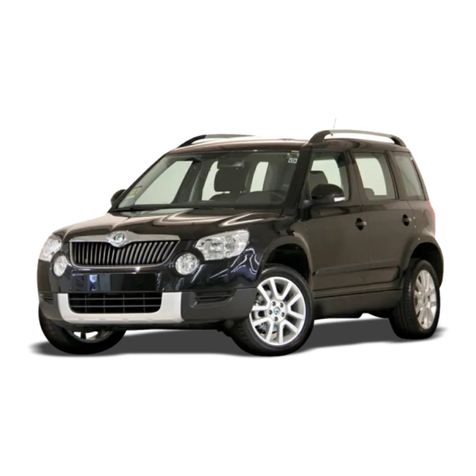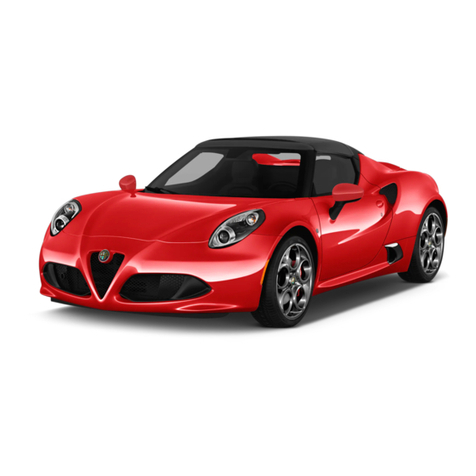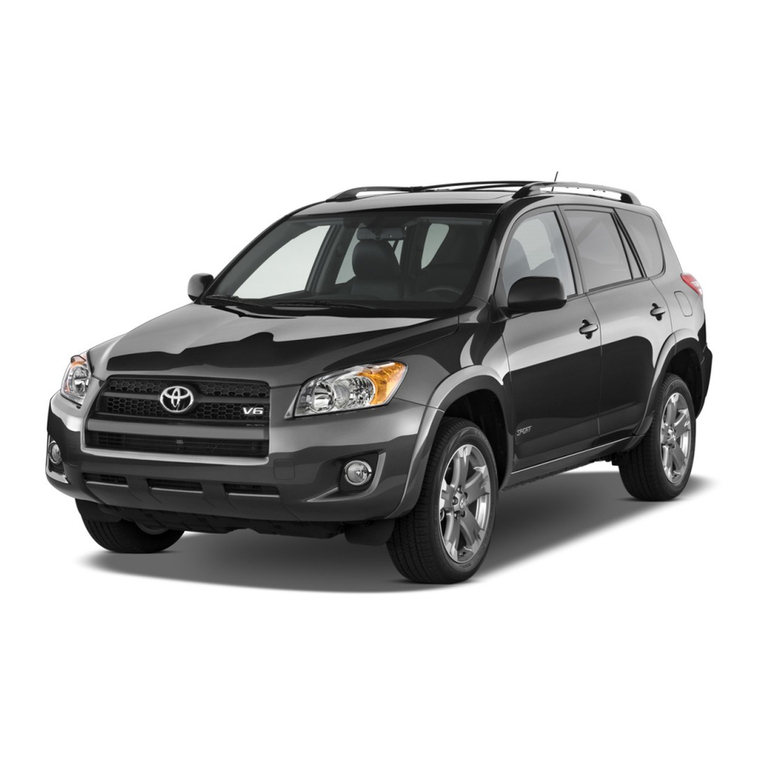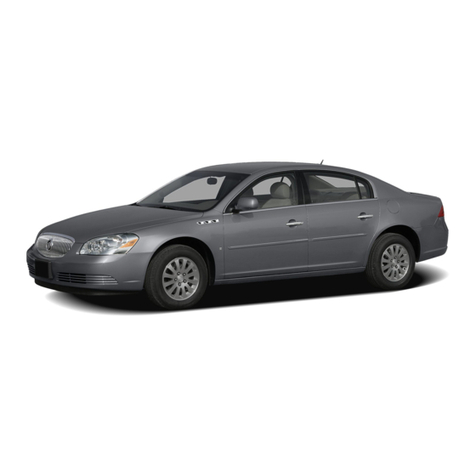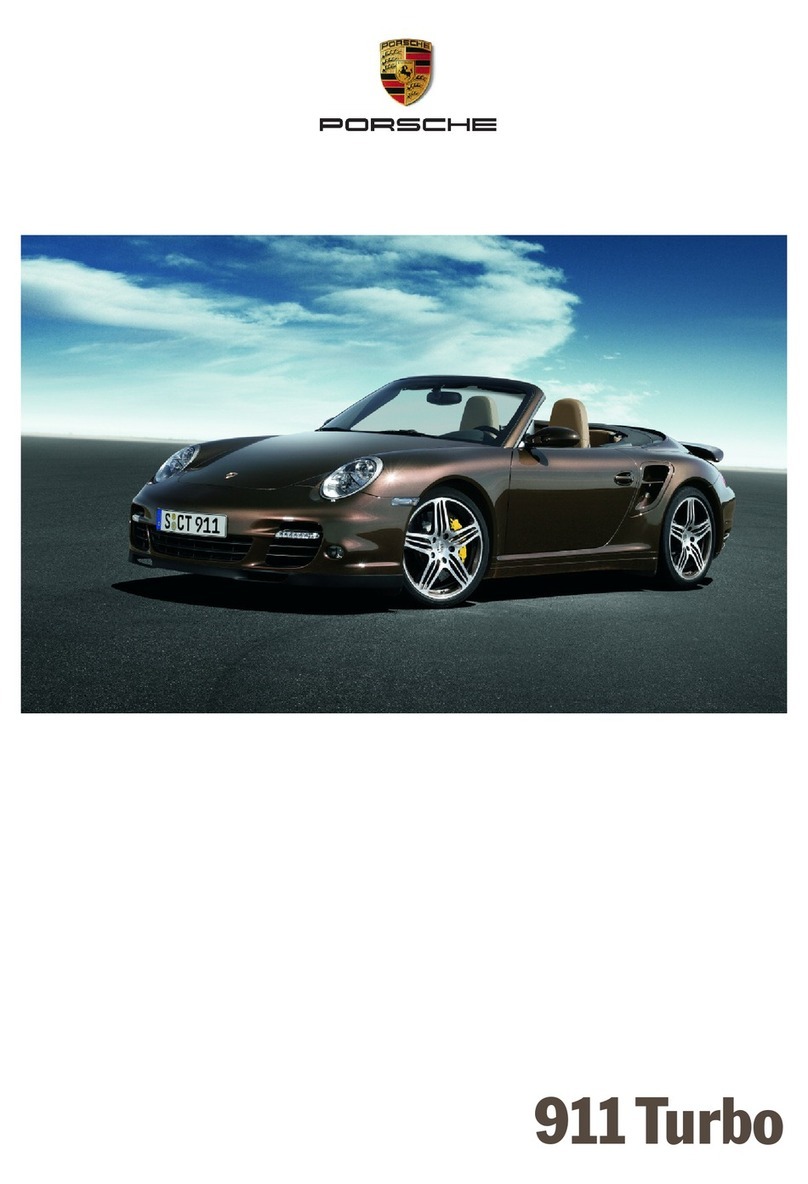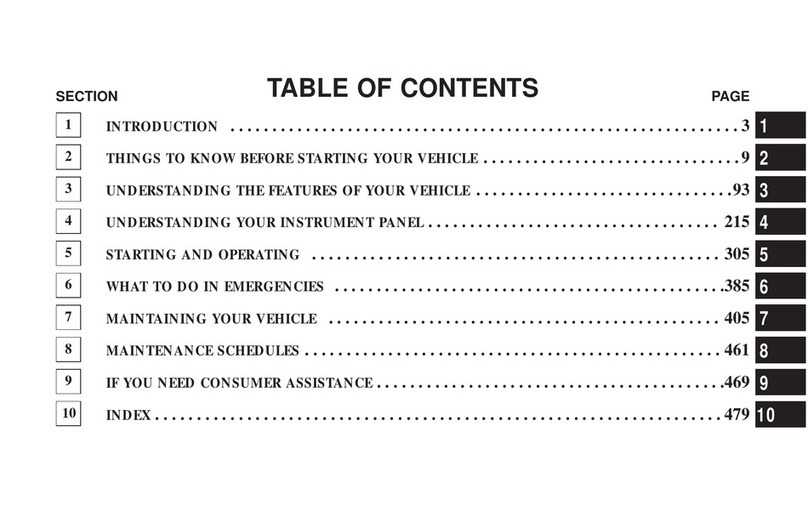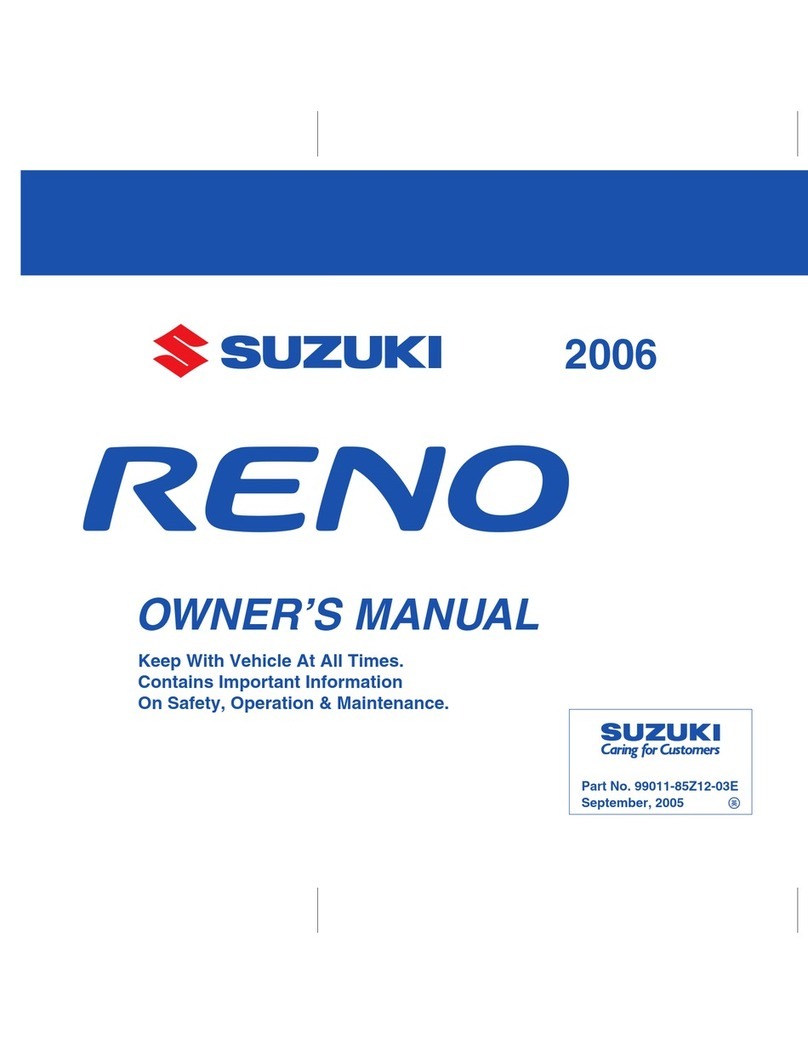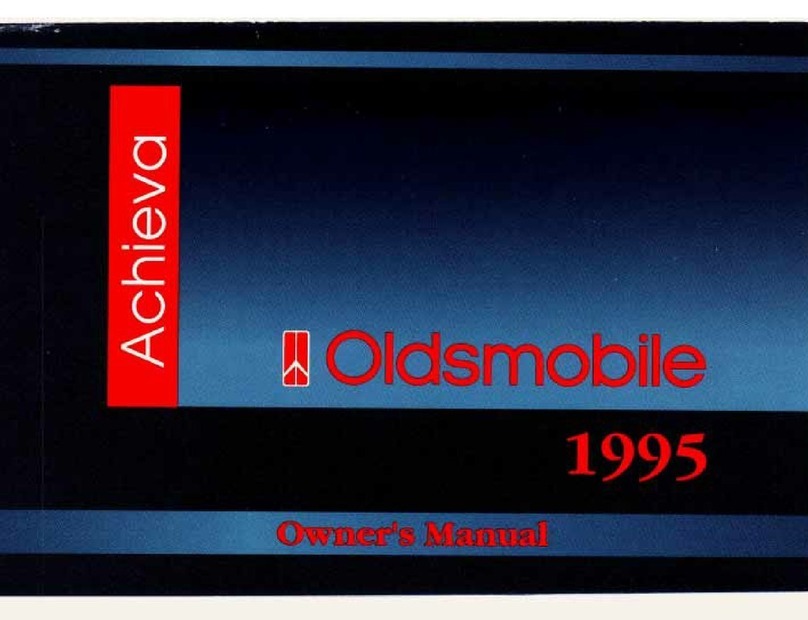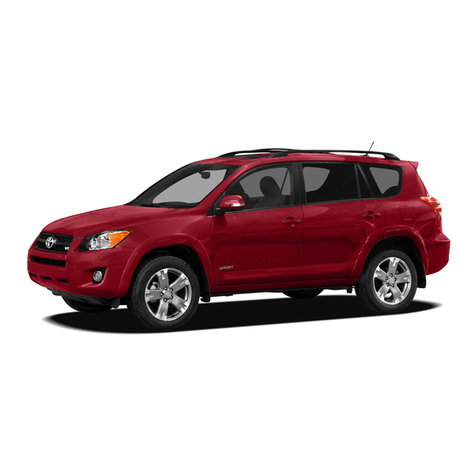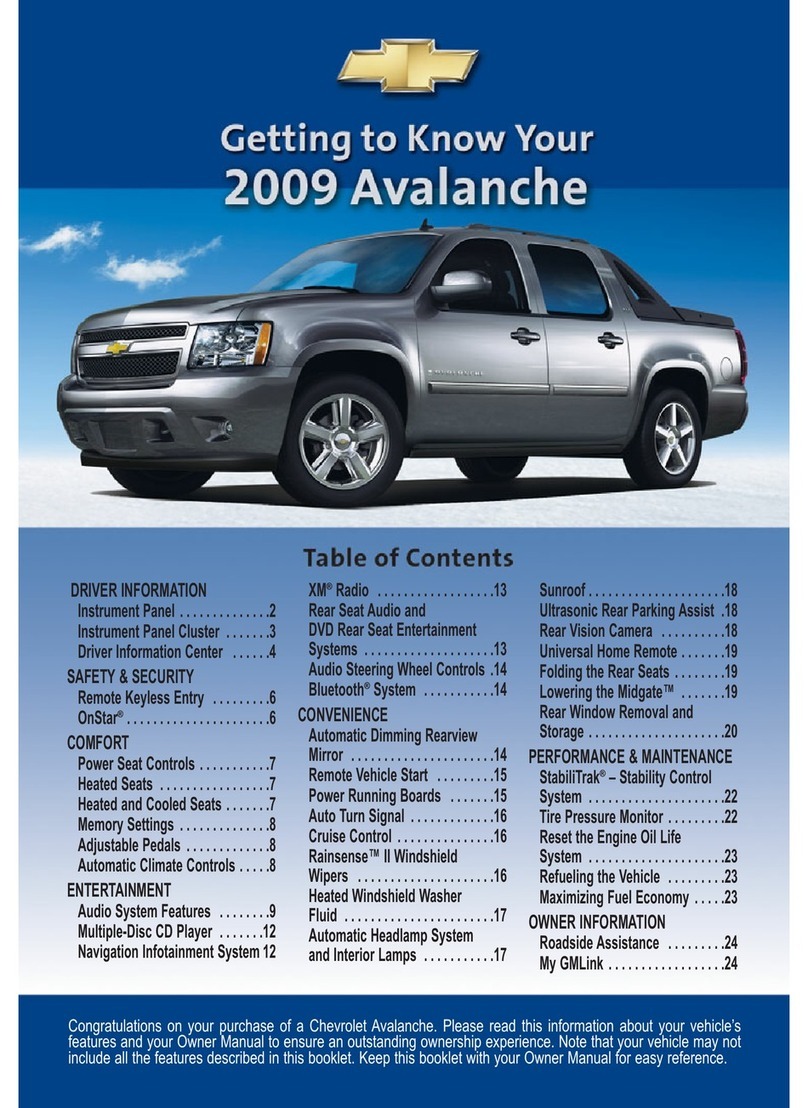Mersedes-Benz 280 SE 1978 User manual


SKf 280 SE
450 SE
Type 116
1978


You have chosen to drive a MERCEDES BENZ, a car in whose
construction and production we have taken great pains because
we believe that quality is not a matter of chance.
Perhaps you have already had experience with a MERCEDES, maybe
this is your first car from the DAIMLER BENZ company. In both
cases — for your own benefit — please read this owner’s manual
before putting it away. Even though you have been driving
a car for years, some things in this car may be new to you, and this
manual certainly contains a few hints which will help you to
make the most of your new car.
We wish you safe and pleasant motoring.
DAIMLER BENZ Aktiengesellschaft
3

Contents
This Owner’s Manual also describes
optional extras as far as this is
required for their operation.
As the scope of delivery is deter
ined by the order, the equip ent
of your vehicle ay deviate fro
the descriptions and illustrations to
so e extent.
The last page
What you should know at the
gas station
Vehicle Operation
Instruments and Controls .... 8
Instrument C lu ste r
........................
10
Keys, D oors
....................................
12
Master Key and
Supplementary K e y
..................
12
Opening, Locking and
Unlocking of Doors
.....................
12
Master Lock System
..................
13
Seats
................................................
14
Front Seat Adjustment .... 14
Safety H eadrest
........................
14
Arm Rest (Rear S eat) 15
Safety Belts
..............................
15
C ontrols
..........................................
17
Steering Lock
...........................
17
Light Switch
.................................
17
Combination S w itch
..................
18
Cruise C on trol
...........................
19
Automatic Climate Control . . . 20
Various Equipm ent
........................
24
Interior Lights
..............................
24
Rear View M irrors
.....................
24
Sun V is o r
....................................
24
Electric Window Lifters .... 25
Lighter
..........................................
26
Shelf below Rear Window . . . 26
Heated Rear W indow 26
Sliding R o o f
..............................
26
Radio
................................................
27
Driving
H o o d
................................................
32
Parking Brake
.................................
32
Regular Inspections
.....................
33
Catalytic Converter Cautions . . 34
Starting and Turning
off the Engine
.................................
35
Starting and Shifting Gears . . . 36
Safe Driving
....................................
38
Brake Pad Wear Indicator . . 40
Brake F luid
.................................
40
Charge Indicator Light .... 40
Oil Pressure G auge
..................
40
Coolant Temperature Gauge . 40
Emission Control........................40
Driving Economically
.....................
41
Fuel Consumption .... 41
Engine Oil Consumption . . . 41
The First 1,000 Miles (1,500 km) . 41
Special Operating Conditions . . 41
Winter Driving
...........................
41
High Altitude Engine
Adjustm ent
.................................
42
Traveling Abroad
.....................
42
4

Contents
Automatic Transmission
Fluid L e v e l
.................................
57
Electrical System
...........................
58
Replacing B ulbs
........................
58
F u s e s
..........................................
61
Battery...........................................61
Spark Plugs
.................................
61
Sliding Roof Emergency
O perating
.......................................
62
Unlocking of the Filler Flap . . . 62
Tow starting and Towing
the Vehicle
.......................................
63
Vehicle Care
MERCEDES BENZ Maintenance
System
.............................................
44
Severe Operating Conditions . 44
Engine Oil Change and Filter
C ha nge
.......................................
45
Automatic Transmission
Fluid and Filter Change .... 45
Spare Parts Service
.....................
45
Cleaning and Care of the Vehicle 46
Jobs related to Care
..................
47
Practical Hints
Ash trays
..........................................
50
Rear Seat Cushion
........................
50
First Aid K it
....................................
51
Vehicle Tool K it
..............................
51
Luggage or Ski Racks
..................
51
Wheels, Tires, Changing Wheels 52
Wheels, T ires
..............................
52
Changing Wheels
........................
53
Tire Inflation Pressure 54
Checking Fuels, Coolants,
Lubricants, etc
.................................
55
Engine Oil Level Check .... 55
Replenishing C oolant 56
Technical Data, Fuels, Coolants,
Lubricants, etc.
Identification P la te s
...............
Vehicle Data Cards
..................
Vehicle Operation
Driving
Vehicle Care
66
67 Practical Hints
Technical D a ta
..............................
68
280 S E
..........................................
68
450 S E L
.......................................
70
Fuels, Coolants, Lubricants, etc. 72
Capacities
....................................
72 Technical Data, Fuels,
Engine O ils
.................................
75 Coolants, Lubricants, etc.
Brake F lu id
.................................
75
Coolants
.......................................
76
Service L iteratu re
........................
77
5


Vehicle Operation

Instruments and Controls
For ore detailed descriptions see quoted pages.
1 Speaker grilles
2 Adjustable louvers for side ventilation (page 20)
3 Control lever for side ventilation (page 20)
4 Parking brake release knob (page 32)
5 Handle to disengage hood lock (page 32)
6 Parking brake pedal (page 32)
7 Combination switch (page 18)
8 Light switch (page 17)
9 Instruction tag (except tourist vehicle).
Use only unleaded gasoline
10 Cruise control (page 19)
11 Instrument cluster (page 10)
12 Horn control
13 Steering lock with ignition/starter switch (page17)
14 Adjustable louvers for cooled air (page 20)
15 Switch for rear passenger compartment light
16 Switch for automatic antenna (page 29)
17 Switch for heated rear window (page 26)
18 Electric sliding roof control (page 26)
19 Automatic climate control (page 20)
20 Radio (page 27)
21 Ash tray with lighter (page 26, 50)
22 Loudspeaker — fader control (page 28)
23 Switch group for window lifters (page 25)
24 Hazard warning flasher switch
Push switch = hazard warning flasher system
switched on
Push switch once more = hazard warning flasher
system switched off
25 Glove compartment (to open, shift handle
sideways). Only illuminated if steering lock is
in position “2”.

Instruments and Controls
15 16^17 18*
IMHiWHMIMI
Con me.
i
9

Instrument Cluster
1 Coolant temperature gauge (° F)
Red marking: Maximum permissible temperature
for an antifreeze blended fill protecting down to
22° F ( 30° C)
2 Fuel gauge with reserve warning light (amber)
Fuel reserve for approx. 30 miles (45 50 km)
For capacity, refer to page 74 and last page.
3 Oil pressure gauge
4 Main odometer
5 Trip odometer
6 Knob for clock adjustment
(press in for adjustments)
7 Electric clock
8 Tachometer
9 Red mark on tachometer:
Maximum permissible engine revolutions,
do not exceed a maximum of 6,500 rpm (280 SE)
or 5,800 rpm (450 SEL).
10 Turn signal indicator light, right (green)
11 Catalyst replacement indicator (only California
vehicles of type 280 SE). When the indicator light
comes on, the catalyst must be replaced
12 Seat belt warning
13 Brake pad wear indicator (red):
Light comes on while braking and driving if the
front wheel brake pads are worn down, refer
to page 40
14 Dimmer knob for instrument lighting,
continuous adjustment
15 Reset knob for trip odometer
(push button)
16 Brake warning light (red) comes on if
• the parking brake is engaged
• too little brake fluid is in the reservoir
17 High beam indicator light (blue)
18 Charge indicator light (red):
Comes on when the steering lock key is
moved to driving position “2” and must go
out when the engine is idling
19 Turn signal indicator light, left (green)

Instrument Cluster
i
8891
11

Keys Doors
Master Key — square head fits all
locks on the car.
upplementary Key — rounded head
— fits only the door locks and the
steering lock. This key is intended
to be used whenever the car is left
with an attendant. Be sure to lock
glove compartment and trunk
with the master key.
Opening the Doors
From outside: pull handle
outwards (1).
From inside: pull handle in door
trim panel.
Locking and Unlocking of Doors
From the outside: turn key.
From the inside: actuate plunger.
2 Unlocking
3 Locking
When the rear door plunger’s are
pushed down the rear doors cannot
be opened from the outside or the
inside. They can be opened after
pulling plungers up.
One cannot lock:
• the driver’s door if it is open.
• each door if the door lock has
not engaged fully. In this case
open the door and close it again.
12

Keys Doors
Master Lock ystem
The master lock system simulta
neously locks or unlocks together
with the driver’s door all other
doors, fuel tank filler flap and trunk
lid. As the driver’s door plunger is
moved, the plungers of all other
doors must move at the same time.
If this is not the case, the lock of
the corresponding door has not
engaged fully. Open the door once
more and close it correctly.
When the master lock system has
been applied, the lock plungers of
the front passenger door and the
rear doors can also be operated
manually from inside. In addition
to this, the front passenger door
can be locked or unlocked by
means of the key.
The master lock system can only be
applied by depressing the plunger
on the driver’s door. Lock plungers
of the other doors cannot be de
pressed individually.
The trunk lid can also be unlocked
separately by turning master
key clockwise to the stop. Push
the trunk lock button in with it
and lift the lid. Return the key to
its initial position and withdraw it.
To lock the lid, close it firmly.
It will then be locked again by the
master lock system.
A provision has been made to
facilitate permanent locking of the
trunk lid for positive prevention
of access to trunk by unauthorized
persons.
Before leaving vehicle with an
attendant, lock trunk with master
key (square head) by turning key
clockwise to stop (tumbler slot
vertical), then provide attendant
with round headed supplementary
key. Thus, the trunk lock has been
excluded from the operation of the
master lock system and cannot be
opened except with the square
headed master key.
To reverse this, turn trunk lock
counterclockwise back to hori
zontal position of the tumbler
slot with master key. Lock will then
be reengaged in master lock
system; that is, it will automatically
be locked or unlocked depending
on whether the driver’s door
is locked or unlocked.
The master lock system operates
on vacuum generated by the engine.
A reservoir allows the master lock
system to be actuated about five
times after the engine is turned off.
If the system can then no longer be
engaged, idle engine for a short
period.
If no vacuum is available, doors and
trunk have to be locked individually
in the normal manner. The fuel
tank filler flap, however, remains
unlocked.
Note:
If the filler flap cannot be opened
when the master lock system is
unlocked, refer to “Unlocking of
the Filler Flap” .

Seats
►
1
Front eat Adjustment
Forward and backward adjustment:
lift handle (1); slide seat to desired
position and allow handle to re
engage.
Height of seat: raise lever (2);
to raise seat, move seat forward;
to lower seat, move seat backward;
allow lever to reengage.
Seat back position: turn handwheel
(3) forward or backward.
For full reclining of backrest, seat
should be moved to one of the
forwardmost positions and headrest
removed. For driving, return seat
rearwards and backrest to upright
position. Replace headrest.
Note:
Prior to operating the vehicle, the
driver should adjust the seat height
for proper vision as well as fore aft
placement and seat back angle to
insure adequate control, reach,
operation, and comfort. The head
rest should also be adjusted for
proper height so that when the
cushion is tipped completely for
ward, it should from a cradle
behind the seat occupant’s head.
Both the inside and outside rear
view mirrors should then be ad
justed for adequate rearward
vision. Fasten seat belts. Children
under the age of six or under the
weight of 50 lbs. (23 kp) should be
seated in the back seat with an
approved restraint system properly
secured.
All seat, headrest, and rearview
mirror adjustments as well as
fastening of seat belts should be
accomplished before the vehicle
is put into motion.
afety Headrest
Adjust headrest to support the
back of the head at the level of
the upper end of ear. For height
adjustment or for removal, push
headrest slightly forward (1). To
detach the headrest, release arrester
by depressing a button to be felt
underthe backrest covering material.
Front seats: button below L/H
headrest post (2).
Rear seats: button above between
both headrest posts.
14

Seats
Arm Rest (Rear Seat)
A center arm rest is provided in the
rear seat which can be pulled out
with a loop.
For the removal of the rear seat
cushion see “Practical Hints” .
4
afety Belts
Warning system:
The indicator marked “FASTEN
SEAT BELTS” is illuminated for
4 8 seconds after turning the
steering lock key to position “2” .
If the safety belt of the driver’s seat
is not fastened a warning buzzer
sounds simultaneously.
Fastening of front and rear outer
seat belts (with inertia reel):
• Pull belt with tongue (1) across
shoulder and lap. The belt must
not be twisted and must be tight.
• Press tongue (1) into buckle (2)
and allow to engage audibly.
Unfastening, front and rear:
• Depress red button “PRESS” (3)
in buckle (2).
• Return tongue (1) to initial
position.
15

eats
Operation:
The safety belt inertia reel stops
the belt from unwinding further in
case of vehicle deceleration in any
direction or if the belt is pulled
out quickly.
Functional test:
The locking function of the inertia
reel can be tested by braking,
driving around a bend or by pulling
the belt out quickly.
Fastening of rear center belt
(without inertia reel):
• Pull belt across the lap. It must
not be twisted and must be tight.
• Press tongue into buckle and
allow to engage audibly.
Adjustment of rear center seat belt:
To lengthen, turn belt buckle (on
LH side of belt) to be at right angles
to the belt and pull the tongue.
To shorten, pull loose end of belt.
Note:
No safety belt can be used for more
than one person. Belts are not
intended for children.
Anchoring points for a child seat
are provided.
After an accident, inspect the
safety belts and replace them,
if required. The belt anchors in the
vehicle should also be checked.
Renew damaged belt webbing.
Belt webbing must not be routed
via sharp edges.
No modifications which may
affect the efficiency of the belts
must be made.
For cleaning and care of belt
webbing, refer to page 47.
16

Controls
:i 8174
teering Lock
0 Off position: When the key is
withdrawn the steering is locked.
To unlock the steering, the key
must be turned to position “ 1
The lights can be switched on.
The key can be removed only
in this position.
Note:
Do not remove key from steering
lock while the vehicle is in motion
as this will cause the engagement
of the steering lock thus rendering
the vehicle inoperable.
2 Driving: The steering is un
locked. (When turning the key clock
wise to position “2” , slightly move
the steering wheel, if required.)
The red charging control light
comes on.
Power supply to standing lights
is cut off.
Starting position:
Turn key clockwise to the stop. The
starter is engaged as long as the key
is held up to the stop. Due to the
starter non repeat unit, the key
must be returned to position “1” or
“0” before making another starting
attempt.
With the key in position “ 1” , the
steering is unlocked. The radio can
be switched on.
A warning buzzer sounds when the
key has been left in steering lock
positions "1 ” or “0” and the driver’s
door is opened.
Light witch
0 Off position
1 Parking lights (includes side mar
ker lights, tail lights, license plate
lights, instrument panel lights)
2 Same as pos. 1 plus headlights
3 Standing lights, right
4 Standing lights, left
A Turn to position 2 and pull out
to first detent = same as
position 2 plus fog lights
B Available for an option
Note:
With the steering lock key removed
and the driver’s door open a signal
sounds if the vehicle’s exterior
lighting is not switched off
(standing lights excepted).
17

Controls
Combination witch
1 Low beam (turn light switch
clockwise two notches)
2 High beam (turn light switch
clockwise two notches)
3 Headlight flasher (high beam
available independent of light
switch position)
4 Turn signals, right
5 Turn signals, left
To operate the turn signals, engage
combination switch. The switch is
automatically reset when the
steering wheel is turned through
a fairly large angle.
To signal minor directional changes
of the vehicle, press combination
switch to the point of resistance
only and hold it there.
6 Control for windshield washer
system
When the washer system is
switched on, the wipers also
operate
7 Windshield wiper control
0 Windshield wiper switched off
1 Intermittent wiping
II Normal wiper speed
III High wiper speed
Hints:
If one of the turn signals fails,
the turn signal indicator system
flashes and sounds at a faster
sequence than under normal
operating conditions.
Fog lights will only operate together
with low beam headlights. Fog
lights are turned off automatically
when light switch is returned to
off position.
18

Controls
Cruise Control
Any given speed above approxi
mately 25 mph (40 km/h) can be
maintained with the cruise control
by operating the switch.
1 = Setting (touch switch)
Accelerating (hold switch)
2 = Setting (touch switch)
Decelerating (hold switch)
Normally the vehicle is acceler
ated to the desired speed with
the accelerator. Speed is set by
briefly pushing the switch to
position “ 1” or “ 2” , and the
accelerator can be released.
The speed can be increased
(e. g. for passing) by using the
accelerator. As soon as the
accelerator is released, the
previously set speed will be
resumed automatically.
If the set speed is to be in
creased or decreased slightly
(e. g. for adaption to the flow
of traffic), retain switch in
position “ 1” or “ 2” until the
desired speed is reached. When
the switch is released, the newly
set speed remains constant.
3=Cancelling
To cancel the cruise control,
briefly push lever to position
“3” .
The cruise control will also be
cancelled if the brake pedal is
actuated or if the vehicle speed
drops on steep grades by more
than 20 %> below the set speed.
4=Resume
If the lever is briefly pushed to
position “4” when driving at a
speed exceeding 25 mph
(40 km/h) that speed is resumed
which was set prior to the can
cellation of the cruise control.
The most recently stored speed
is cancelled when the key in
the steering lock is reversed to
position “1 ” or “0”.
Important:
Please do not use the cruise control
if traffic conditions do not make
it advisable to maintain a steady
speed, i. e. in heavy traffic or on
twisting or slick and muddy roads.
Position “Resume” should be
applied only if the driver is fully
aware of this speed and wishes
to resume this particular preset
speed.
When driving with the cruise
control, the selector lever must not
be shifted to position “ N" as other
wise the engine will speed up.
This manual suits for next models
1
Table of contents
Other Mersedes-Benz Automobile manuals


